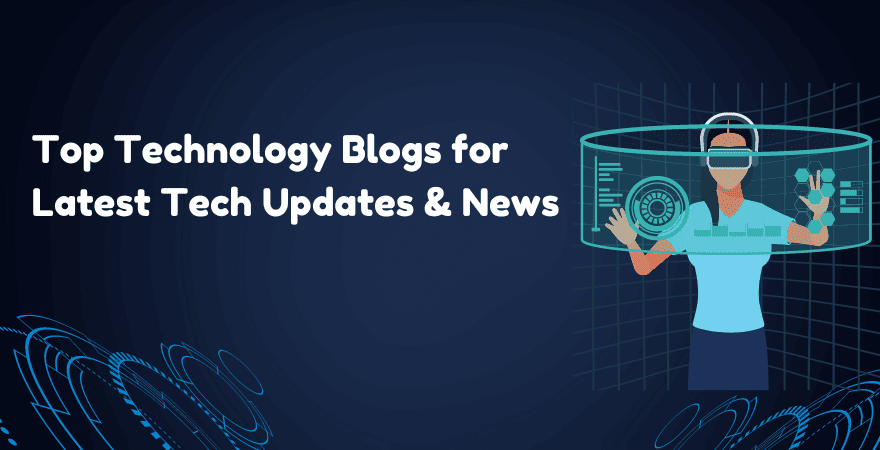Discover the Best tech blog for the Latest Trends and Advancements in Innovation
Discover the Best tech blog for the Latest Trends and Advancements in Innovation
Blog Article
Comprehending the Increase of Side Computing in Today's Digital World
In the swiftly advancing landscape of innovation, side computing emerges as a crucial force, reshaping how information is refined and made use of. By transitioning data administration closer to the source, edge computing addresses important latency problems while enhancing transmission capacity use and boosting safety steps.
What Is Edge Computer
Edge computer, although a reasonably current development in the realm of technology, basically changes how data is processed and taken care of by bringing calculation and data storage space closer to the area where it is needed. Unlike traditional cloud computing versions, which typically count on centralized information facilities that can be geographically far-off, side computer decentralizes information handling. This distance lowers latency, improves real-time data handling, and enhances the total user experience by guaranteeing faster feedback times.
At its core, side computer includes a network of localized gadgets and facilities, such as sensors, routers, and entrances, efficient in refining data at or near the resource. This localized handling capability is especially critical for applications requiring prompt information analysis, such as independent cars, commercial automation, and clever cities. Furthermore, by unloading information handling jobs from main web servers, side computing decreases transmission capacity requirements and enhances information privacy and protection, as delicate details can stay on-site instead of traversing considerable networks.

Secret Vehicle Drivers of Fostering
A number of variables are pushing the adoption of side computer in today's electronic landscape. Edge calculating addresses this requirement by making it possible for data handling closer to the data source, lowering latency and enhancing real-time decision-making abilities.
One more substantial motorist is the need for boosted transmission capacity effectiveness. Centralized cloud systems can come to be overloaded with the sheer volume of information generated by IoT devices, resulting in bottlenecks (Best tech blog). By refining data at the edge, organizations can relieve network blockage and improve total system efficiency
In addition, safety and security and personal privacy concerns are pushing organizations toward edge computer. By refining sensitive data in your area, companies can minimize threats related to information transmission and exposure to potential cyber threats.
The surge of applications calling for real-time processing, such as autonomous cars and boosted reality, also requires the quick feedback times that border computing supplies. Jointly, these drivers are making edge computing a vital component of modern IT framework, leading the way for its prevalent fostering throughout numerous sectors.
Benefits Over Cloud Computer
Just how does side computing differentiate itself from standard cloud computing? Primarily, side computing brings information handling closer to the source of information generation, frequently on neighborhood devices or close-by web servers, instead of relying upon central data centers. This closeness significantly lowers latency, allowing real-time data processing and decision-making. For sectors where milliseconds matter, such as independent cars or commercial automation, the lowered latency given by edge computer can be vital.
Furthermore, side computing boosts data transfer performance (Best tech blog). By refining information in your area, only the needed information is sent to the cloud for more evaluation or storage space, lowering the quantity of data that passes through the network. This not just alleviates network blockage yet additionally decreases data transmission prices
Side computer also provides improved information personal privacy and safety and security. Sensitive data can be processed in your area without being sent to the cloud, reducing the exposure to possible cyber dangers. This is particularly beneficial for sectors taking care of private information, such as health care and financial services.
In addition, edge computing makes sure greater durability and reliability. Regional processing enables for continued procedure also when connectivity to the cloud is jeopardized, maintaining essential features and services despite prospective network disruptions. These benefits collectively show edge computer's transformative potential in maximizing efficiency and protection in digital communities.
Factors To Consider and obstacles
While edge computer supplies numerous benefits, it likewise provides one-of-a-kind challenges and factors to consider that should be dealt with to fully realize its potential. One considerable difficulty is information safety and privacy. Processing data more detailed to the resource increases the threat of unapproved gain access to, demanding durable encryption and stringent safety and security protocols to secure delicate details. Additionally, handling and keeping This Site an eye on a decentralized network of edge tools can be complicated, calling for innovative devices and strategies to guarantee seamless procedure and upkeep.
One more consideration is the scalability of edge computer options. As the variety of connected gadgets expands, so does the demand for refining power at the side, which can result in source restrictions. Organizations must meticulously prepare their facilities to suit this development without compromising performance or effectiveness.
Interoperability is an additional essential variable. With various software and hardware components included, making sure compatibility and smooth combination can be difficult. Standardization initiatives are important to assist in interaction between diverse systems.
Future Patterns in Edge Computing
Preparing for the future, edge computer is poised to transform various markets by enabling faster information processing and reducing latency. As the volume of information produced by IoT tools continues to expand, edge computer here are the findings will become increasingly important in managing this influx efficiently. One considerable fad is the assimilation of artificial intelligence at the side, enabling real-time analytics and decision-making without depending on cloud-based sources. This shift is anticipated to enhance applications in self-governing lorries, clever cities, and healthcare, where instant information handling is important.
Another emerging pattern is the advancement of edge-native applications made particularly to take advantage of the one-of-a-kind capabilities of side computing. These applications will optimize performance and resource utilization, leading to raised effectiveness across numerous sectors. In addition, innovations in 5G innovation will certainly even more reinforce side computing by giving the necessary facilities for high-speed, low-latency communication between tools and edge nodes.
Verdict
Side computing's surge is driven by the spreading of IoT gadgets and the demand for real-time data handling, which boosts effectiveness by reducing latency and decentralizing information administration. This strategy alleviates data transfer ineffectiveness and security concerns, promoting advancements in applications like autonomous lorries and wise cities. In spite of difficulties such as infrastructure intricacy and combination, the future of side computing assures a much more receptive digital environment, with proceeded innovations shaping its evolution and expanding its applicability across markets.
Side computer, although a relatively current advancement in the realm of modern technology, essentially changes how data is refined and taken care of by bringing calculation and information storage space closer to the area where it is required. Unlike traditional cloud computing designs, which often rely on central information centers that can be geographically remote, edge computer decentralizes information handling. Furthermore, by offloading information processing jobs from central servers, side computer lowers data transfer requirements and improves information personal privacy and safety, as delicate details can continue to be on-site instead than traversing considerable networks.

Report this page